18 awesome games that died at retail
Reviewers loved them, but that didn’t stop them from selling like crap
We’ve already covered thebestselling crap; this time, we’ll take a look at some of the times when the public couldn’t be bothered to follow the critics’ advice – and in doing so, missed out on some amazing games.
Metal Arms: Glitch in the System (2003)
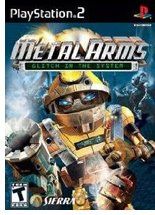
Average Metacritic score: 82
What was it? A third-person shooter/platformer starring Glitch, a gun-happy little robot who could drive vehicles, control the robot minds of his enemies and generally wreak explosive havoc.
What made it so great? Metal Arms' cast of characters was made up entirely of belligerent robots, and while some might read that as an attempt to make a shooter like this more “family friendly,” it in fact enabled the game to soar to ridiculous heights of carnage. Explosions were huge and constant, the arsenal of available weapons was enormous and individual body parts could be shot off enemies, crippling their ability to attack you. Frequently compared to both Halo and Ratchet & Clank, Metal Arms was a rich, versatile experience, packing in lots of vehicles to drive, guns to shoot and puzzles that required you to destroy large chunks of the environment. Add in Glitch’s ability to hijack and remotely control enemies, and you had a shooter that borrowed from the best, but still managed to stand on its own merits.
Highest praise: “It's flawless down to the lovely presentation – even the animated loading screen is super cool! Metal Arms: Glitch In The System is one of the finest games to come out in this generation and one of the most underrated ones too.” –AceGamez
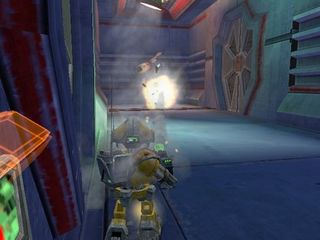
Why it tanked anyway: While we could chalk this up to any number of factors – the generic title, the squat robot protagonist on the box, the fact that the game looked too “kiddy” for “serious” gamers and too violent for little kids – the real culprit is more likely the infamous 2003 holiday season. Crammed to the gills with ultra-high-profile releases – including Prince of Persia: The Sands of Time, Star Wars: Knights of the Old Republic, Ratchet & Clank: Going Commando and the first Call of Duty – the months between October and December drowned would-be new franchises in a torrent of higher-profile games. Without the marketing muscle or the name recognition to keep its head above water, Metal Arms was one of the season’s first casualties.
What was it? A sci-fi adventure that borrowed all the best bits of Zelda and Spllinter Cell to tell the story of a crusading photojournalist and her uncle, an anthropomorphic pig.
What made it so great? Beyond Good & Evil was a relentlessly beautiful game with a likeable heroine and a cool soundtrack, but a big part of its strength came from its gameplay. Putting heroine Jade on a quest for photographic evidence to use against a totalitarian regime secretly running both sides of a war, the game was frequently compared to Zelda, and its approach to combat and puzzle-solving did borrow a bit from Nintendo’s venerable franchise. However, BG&E rounded out its action with camera- and partner-centric puzzles, along with stealth sequences and hovercraft combat. It also didn’t hurt that the script was almost as beautiful as the game itself, with memorable characters and an epic scope combining to create a world you actually wanted to save.
Sign up to the 12DOVE Newsletter
Weekly digests, tales from the communities you love, and more
Highest praise: “Where most games entertain us with cutscenes to observe, Beyond Good & Evil is a cutscene. This is the first game to fully, properly inject the undeniable power of cinematic technique into the experience.” – Play magazine
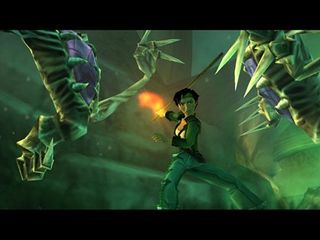
Why it tanked anyway: Another victim of the aforementioned 2003 holiday season, Beyond Good & Evil had the added disadvantage of having to compete against its own publisher’s other titles, which included Prince of Persia: The Sands of Time and XIII (which also tanked hard). But at least there’s more hope for BG&E than there is for the other sad cases on this list, as trailers released by publisher Ubisoft have confirmed there’s a slick-looking sequel in the works.
What was it? The first-ever GTA for the Nintendo DS, and the most relentlessly enjoyable attempt to bring the series to a handheld.
What made it so great? Chinatown Wars sported amazing graphics for a DS title, but more than that, it was a lot of fun. While it (more or less) accurately re-created Grand Theft Auto IV’s huge Liberty City in a simplified, overhead-view form, it was a return to the goofier tone of the series’ roots. As such, it featured instantly accessible action, touch-screen-centric minigames that brought players closer to its enormous handheld world, and one of the most engrossing drug-dealing strategy games ever created.
Highest praise: “Chinatown Wars is a triumph, not just in terms of bringing a difficult game to a new platform intact, but because it actually improves it in the process, and demonstrates a mastery of DS form and function. … This is GTA as it first was, with the inherited wisdom of GTA as it's been since, finished off with all sorts of things that would happily belong in a GTA of the future.” –Eurogamer
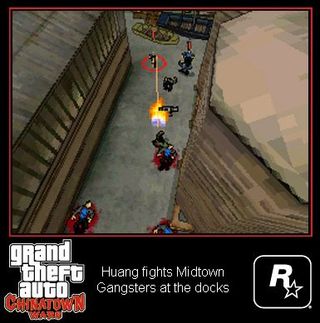
Why it tanked anyway: For all the complaints we’ve heard that there still aren’t enough “mature” games for their systems, it seems not enough Nintendo fans are willing to put up or shut up when it comes to buying the ones that actually come out. Either that, or the DS is more dominated by young children and families than we realized. Either way, there’s clearly not a lot of overlap between the GTA and DS fanbases, and that’s a lesson Chinatown Wars learned the hard way.
What was it? A bizarre, frequently hilarious platforming-adventure about psychic kids. It took place mostly in the minds of its troubled characters, which manifested as huge, puzzle-filled 3D worlds.
What made it so great? At first blush just a strange-looking platformer, Psychonauts – created by Tim Schafer, the mind behind Brutal Legend and most of LucasArts’ best adventure games – quickly became much more. As Raz – a young would-be cadet at a summer camp for psychics – players solved problems in the “real” world by journeying inside the minds of its characters and fixing their mental issues. And because every mind is different, every one of those mindscapes looked and behaved differently, hewing to their own rules.
One was a massive cube floating in space, seemingly featureless until its owner would lose control and emotional baggage flooded out; another took the shape of a strategy game between a poor nincompoop and Napoleon, who had taken over his personality. Others looked like a ravaged World War II battlefield, a black-velvet painting come to life and a hyper-paranoid vision of ‘50s suburbia in which every inhabitant was an obvious spy. That the actual platforming action was pretty fantastic only made the creativity on display more memorable.
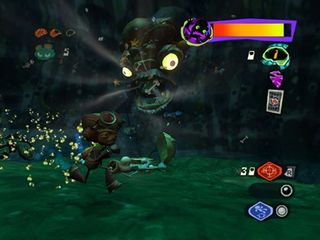
Above: The stuff that happened in Raz’s waking world could be even weirder, like this battle with a giant lungfish
Highest praise: “Taken as a whole package, Psychonauts is the best platform game ever to grace the Xbox. … Gamers who don’t try it will miss one great game, while the adventurous gamer who takes a chance and gives Psychonauts a play through will count it as an unforgettable game with production qualities that are some of the best of the year.” –GameShark
Why it tanked anyway: Psychonauts was sort of doomed from the start; originally slated to be a huge exclusive published by Microsoft, it was killed off part of the way through development. Gamers cheered when it was announced that Majesco would swoop in to help finish the project, but it turned out the game’s internet notoriety wasn’t enough to move copies, and the lack of a serious marketing push (not to mention the reported lack of copies actually shipped out to retailers) sealed Psychonauts’ fate.
What was it? A lighthearted, near-future skatepunk romp set in the backstreets of Tokyo and centering around in-line skate tricks, graffiti, gang warfare and dodging cops.
What made it so great? Jet Grind Radio (aka Jet Set Radio) was absurdly fun, wonderfully fast and anarchic in a way that was almost unprecedented in the pre-GTA III world of 2000. It also holds up better than most other Dreamcast games, thanks in large part to its pioneering use of cel-shaded graphics, which gave the whole thing the feel of a 3D, fully explorable cartoon. The ease with which we were able to grind on rails and pull off jump tricks in the game very nearly did for in-line skates what Tony Hawk did for skateboards (read: create a legion of uncoordinated posers who think they can skate in real life), and there was an undeniable thrill in leaving downtown Tokyo plastered in our own custom logos. Oh, and the soundtrack kicked all kinds of ass, too.
Highest praise: “Sega has once again successfully created an entirely new genre for game fans to become addicted to. … Jet Set Radio's graphics are the type that force people to run out of their home to the nearest import shop. Jet Set Radio gives you an excuse to buy that Dreamcast instead of holding out for the PS2.” –Gaming Age
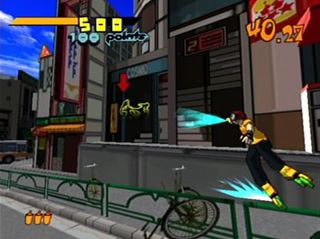
Why it tanked anyway: The last console generation was not kind to Sega, which churned out some of its best-ever games and was rewarded with years of mostly lukewarm sales. The trouble began with its storied Dreamcast console, which thundered onto the market in 1999 and quietly exited just two years later. Those two years saw a surprising number of brilliant, creative games, and Jet Grind Radio was one of the best. It also gained an enduring cult following, which unfortunately didn’t do much to prop up its sagging sales.
It’s hard to say exactly what dragged JGR down. It could have been a victim of the relative unpopularity of the Dreamcast, or it might just have been a case of gamers’ stereotypical reluctance to try new things. It could have been the bizarre advertising campaign, the eye-shatteringly colorful box art or just bad luck. Whatever the case, JGR wound up in bargain bins within months of its release, dropping its price as low as $10 in some stores.
What was it? A badass NES side-scroller featuring a robot that could flip gravity at will.
What made it so great? Part action game, part puzzler, Metal Storm was fast, violent, addictive and hard as hell. Its protagonist, the M-308 Gunner, could fire in four directions and, at any time, reverse gravity so as to walk around on the ceiling – something that was essential for beating most of the game’s mind-bending jumping puzzles. It was also a jaw-dropping graphical powerhouse, notable for featuring fluid animation and multiple levels of scrolling backgrounds. It certainly wasn’t the deepest game ever released for the NES, but it still stands as one of the more unique.
Highest praise: This:

In 1991, there was no higher praise than being plastered on the front cover of Nintendo Power and given eight full pages of coverage inside.
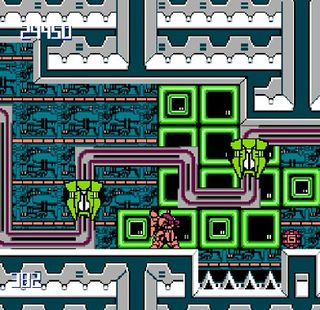
Why it tanked anyway: It’s difficult to say, 18 years later, exactly what caused an incredible-for-its-time game like Metal Storm to curl up and die the way it did. It might have even had something to do with the crappy localization it received, which removed its cutscenes and messed with the color palette, although that’s doubtful.
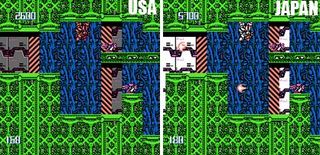
More likely, it was a case of gamers being too interested in the more sophisticated Genesis/Mega Drive and the upcoming Super NES to pay attention to an oddball NES game about some robot. It could have been that – aside from the spread in Nintendo Power – the game didn’t really receive much publicity or attention. Or it might have been that, even in 1991, gamers needed to a face or a recognizable character to connect to in order to give an untested new property a chance – and the Metal Storm’s faceless M-308 Gunner just didn’t cut it.
What was it? The second chapter in what was supposed to have been an epic trilogy of martial-arts-themed, quicktime-event-tainted, awkward-conversation-filled adventures.
What made it so great? Building on the epic scope of the original Shenmue, the sequel took the action out of protagonist Ryo Hazuki’s sleepy Japanese hometown and moved it to Hong Kong, and with that sudden jump in scale came a flood of new things to do and see. It also ramped up the number of action scenes, including quicktime events (which were still new and interesting back in 2002) as well as the more interesting Virtua Fighter-inspired fights. These also had a greater impact on the fascinating, multi-part plot this time, and losing fights could take the story in a slightly different direction (instead of just forcing you to try again).
Highest praise: “The series, especially this installment, has become among the most memorable game-playing experiences of my life. … The greatest compliment I can give this game is that it has convinced me that the only thing that keeps my world together is the existence and peculiarities of others.” –GameCritics.com
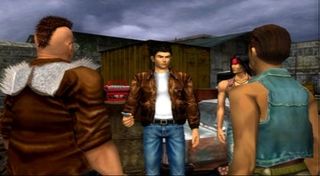
Why it tanked anyway: Sega had a rough time of it even after the Dreamcast died off. If a lot of the praise Shenmue II received seemed a little strained, it wasn’t without good reason. By the time the game ended up arriving on Xbox, it already looked dated, and its repetitive conversations quickly went from a device for fleshing out the world to an inane laughingstock. Also, most of Shenmue II’s fanbase had already imported the European Dreamcast version of the game, which effectively dried up the market for this latecomer port.
What was it? A weird, Wild West-themed shooter about a monstrous bounty hunter who uses live animals as ammo and hides a strange and terrible secret.
What made it so great? A standout title even among the usually excellent Oddworld games, Stranger’s Wrath mixed first-person shooting – using a crossbow and different kinds of (very) live ammo – with acrobatic third-person climbing and platforming. It also starred a bounty hunter who looked like Clint Eastwood crossed with a goat, and who wandered a Wild West hellscape capturing cowboy-looking thugs and handing them over to the chicken-faced townsfolk. This being an Oddworld story, it also hid a deeper, anti-corporate story for those who stuck with it – one involving water rights, natives being forced off their land and the last survivors of a noble species that used to rule the countryside. No matter how heavy-handed its satire got, though, it was always a blast to play.
Highest praise:“[Stranger’s Wrath] offers such a mix of modern game genres that pretty much everybody will find something to love and many, like myself, will find a lot to love. … A perfect 5 out of 5 gaming experience and the first great Xbox game of 2005.” –GameShark
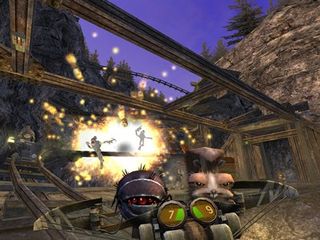
Why it tanked anyway: It probably didn’t help much that Stranger’s Wrath veered sharply away from the established Oddworld narrative – no Abe and no Munch meant a lot of fans didn’t really see it as worth their time. Add to that the fact that it was hyped as a first-person shooter – a genre that was flooding the Xbox in ’05 – and you can see how certain would-be gaming “connoisseurs” might turn up their noses at it. (Oh, cruel irony!)
What was it? The Xbox-exclusive sequel to the Sega Saturn’s flagship series, which involved flying around on a dragon’s back and blasting every weird thing that moved.
What made it so great? The Panzer Dragoon games were arguably the best things about Sega’s failed Saturn console, combining amazingly pretty (at the time) on-rails shooter action with the thrill of flying a giant mutant dragon through a strange, post-apocalyptic world. And while the highly acclaimed (and extremely rare) Panzer Dragoon Saga took the franchise in an RPG-flavored direction, Orta brought it firmly back to its rail-shooter roots, with the full power of the Xbox behind it. For fans of the original games, Orta was nothing short of breathtaking, and its story – while a direct continuation of Saga’s – was nonetheless relatively easy to follow for newcomers.
Highest praise: “This game looks beautiful, and is one of the best shooters we’ve ever played, but we just can’t explain how therapeutic it is to incinerate everything with the power of a thousand George Foreman grills.” –Maxim, in a rare fit of actually liking an obscure game
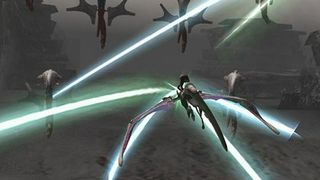
Why it tanked anyway: While it’s tempting at this point to just throw up our hands at this point and declare Sega’s early-2000s efforts to have been cursed, Orta’s failure at the market was really down to two things: by 2003, Sega fans – the vast majority of Panzer Dragoon’s fanbase – had become a niche unto themselves, and relatively few of them followed Sega onto the Xbox. As for mainstream gamers coming at Orta fresh, it seems the brand was a little too weird, the ultra-linear action a little too confining and the run-time a little too short for the game to really catch on or be seen as worth full price at retail.
What was it? An endlessly brilliant point-and-click adventure that starred Dia de Los Muertos skeletons and took place almost entirely in the Mayan underworld.
What made it so great? Where to begin? The art deco presentation was memorably slick, the game’s vision of the afterlife was richly realized and believable and the story – about a post-life travel agent who falls in love with a mysterious woman – spun an elaborate Mayan-noir yarn, filled with intrigue, skeletons and friendly demons, that has to be played to be believed (or even understood, for that matter). The heroes were lovable, the villains diabolical and the puzzles – which included a competitive beat-poetry slam, among other things – were unforgettable. In short, this was the apex of the point-and-click genre. Too bad it came out when nobody cared about point-and-click anymore.
Highest praise: “Quite possibly one of the top five adventures of all time, and certainly in the Top Ten. The style, atmosphere, wit, creativity and inventiveness are what make Grim Fandango remarkable. … One would almost say that ‘they don't make them like that anymore’ – but fortunately that isn't quite true.” –Just Adventure
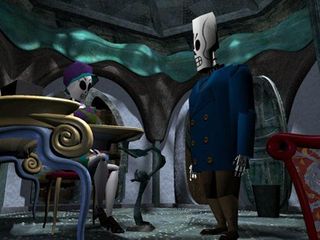
Why it tanked anyway: Impenetrable title? Skeleton protagonists? Oh yeah, we bet that’d sell millions. Even putting aside the obvious lack of mass-market appeal, though, Grim Fandango’s failure at market can be chalked up to a general disillusionment with point-and-click adventures, which by 1998 were seen as slow-paced, antiquated relics. Perhaps it’s fitting that a game about death and what happens afterward sounded the death knell for adventure games as we knew them, but Grim Fandango’s so relentlessly enjoyable that we can’t help but wish it’d happened to a crappier title.
What was it? A beautifully realized point-and-click adventure that features innovative claymation, a warped sense of fun, an incredible soundtrack and a “DURR HURR HURR” aesthetic.
What made it so great? Essentially a full-motion-video game, The Neverhood distinguished itself by using lavish, stop-motion claymation (by Doug TenNapel, creator of Earthworm Jim) instead of live actors on bluescreen sets. The actual gameplay was a combination of traditional point-and-click puzzle-solving and Myst-style first-person exploration, and it was all crisply rendered, with characters that exploded with personality. At the center of it all was Klaymen, a moronic, rubbery everyman whose extravagant bumbling generated most of the game’s bizarre slapstick humor, and the whole thing was accompanied by an incredible soundtrack of original songs.
Highest praise: “Has time been kind to The Neverhood? It certainly has. On many levels, the game is superior to more contemporary counterparts that may be technically superior. ... In other words, it is still as fun to play today as years ago—and fun is, basically, what gaming is all about.” –Adventure Classic Gaming
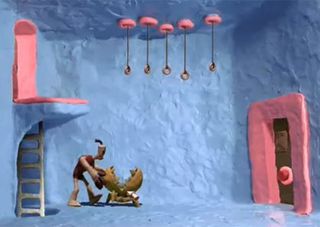
Actually, you can’t get a feel for why it was awesome just looking at a still picture. Here, check out this YouTube clip:
Why it tanked anyway: While we like to think of Grim Fandango as the beginning of the end for point-and-click gaming, the truth is that the slide started long before then. The Neverhood might have gained a cult following (as well as a sequel, Skullmonkeys, which ditched adventure for a platforming approach), but it never flew off the shelves – a shame, considering the amount of time and money that must have gone into creating its elaborate clay sets and characters.
Oh, and…
What was it? Either the single most amazing PS2/Wii game ever made or an endless public guilt trip we keep laying on our readers, depending on who you ask. Also, it’s a Zelda-like game about a sun-goddess/wolf out to rescue Japan from an oppressive gray curse with the power of art.
What made it so great? Pssh. You didn’t think we were going to leave this out, did you? Any opportunity to shoehorn Okami into a feature is an opportunity we’re going to take. A deep, versatile and endlessly enjoyable romp that borrows heavily from the Zelda series, Okami offers up a huge, more-or-less freely explorable version of folkloric Japan to run amok in, and then fills it with seemingly endless monsters to kill and activities to pursue. These only get more diverse and interesting as you gain new powers (most of which revolve around painting designs on the screen with a magic brush), and include making friends with animals, building bridges, digging wells, regrowing vegetation and occasionally tormenting the locals. Of course, the single most striking thing about Okami is its visual style, which is not only brilliantly animated but creatively uses cel-shading to create a look that’s part cartoon, part watercolor painting. And it’s all awesome.
Highest praise: “If games can be art, here’s the best possible example. … If you consider yourself a gamer in any way, buy this right now. You will not be disappointed.” –GamesRadar(Sorry, we had to.)
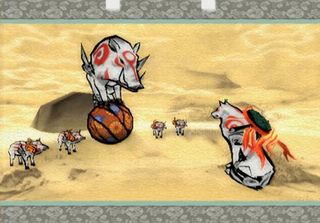
Why it tanked anyway: It’s hard to say. There wasn’t anything too notable that came out around the same time to distract gamers (unless you count Scarface, which hit almost a month later). However, the 360 was already starting to make PS2 games seem antiquated by late 2006, and with the PS3 and Wii just over the horizon, it’s possible gamers were too busy looking ahead to take a risk on what was in front of them. It’s also possible that Okami’s charms actually worked against it, as the unusual name and cartoony presentation might have been a turnoff to gamers looking for more “serious” fare. Or maybe gamers just didn’t like the idea of playing as a dog on fire. Whatever the case, it looks like the DS sequel might be headed our way soon, so let’s hope it finds an audience this time.
Oct 21, 2009


Bestselling crap
The critics panned them, but you bought them anyway - let's look at why

The best games that never got the sequels they deserve

This isn't tough love, it's a friggin' INTERVENTION. Don't miss this game
Most Popular



